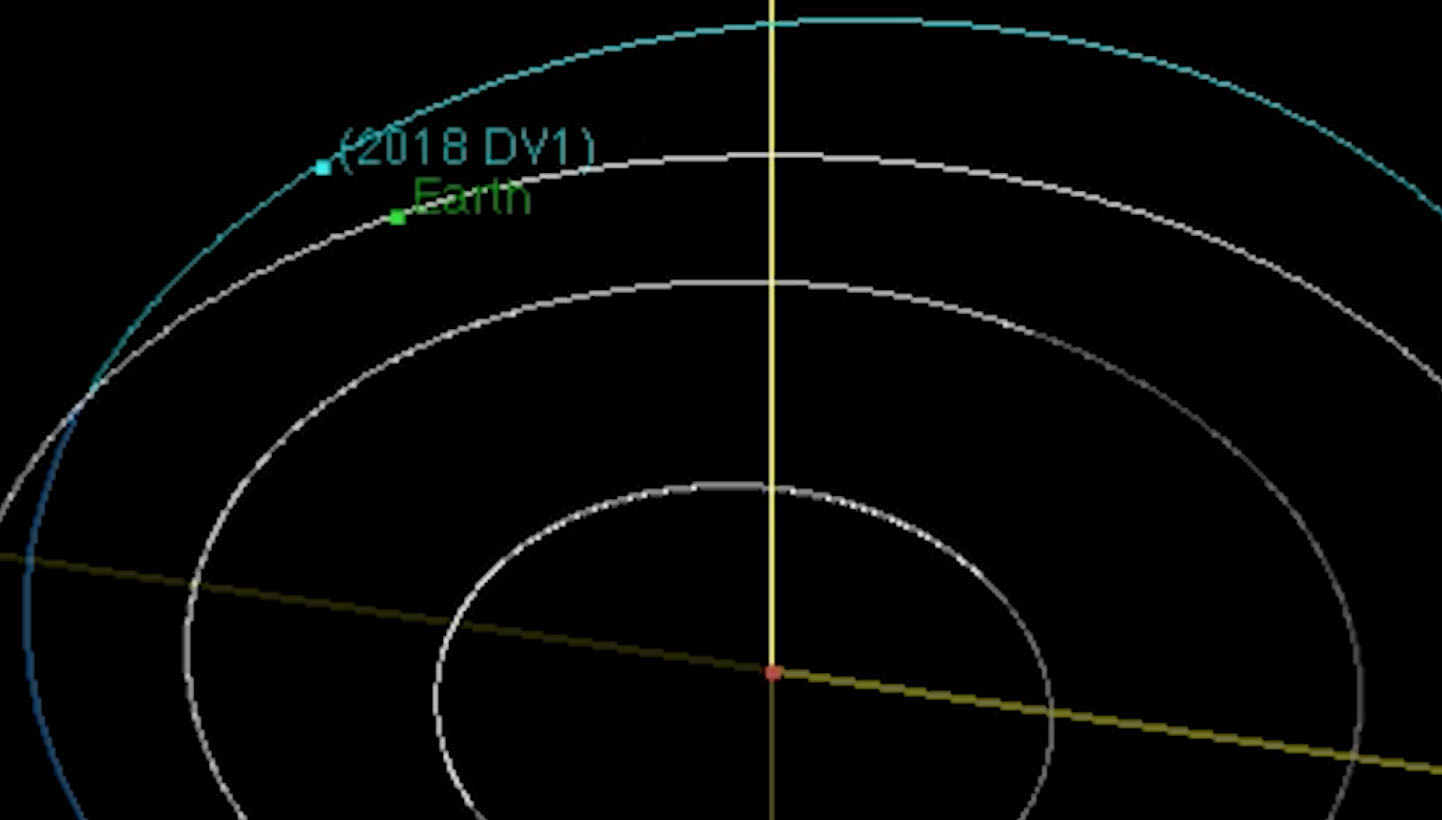A Bus-Size Asteroid Will Whiz by Earth Friday
The newfound near-Earth asteroid, called 2018 DV1, is about the size of a bus and will approach within 70,000 miles (113,000 kilometers) of Earth during its flyby, according to scientists with NASA's Asteroid Watch program. The asteroid is about 23 feet (7 meters) wide, the program's asteroid-tracking widget stated.
The Virtual Telescope Project will host a free webcast, led by astrophysicist Gianluca Masi in Ceccano, Italy, for the event. The webcast will feature views of the asteroid as seen by a 16-inch (41 centimeters) robotic telescope at the Tenagra Observatories in Arizona. You can watch the webcast live here Friday, beginning at 12:30 a.m. EST (0530 GMT). [In Photos: Potentially Dangerous Asteroids]
Astronomers using a telescope at the Mount Lemmon Observatory in Arizona first spotted asteroid 2018 DV1 on Monday (Feb. 26), according to an update from the International Astronomical Union's Minor Planet Center in Cambridge, Massachusetts.

Friday's asteroid flyby comes on the heels of another close encounter by the asteroid 2018 DU on Sunday (Feb. 25). That asteroid got within about 196,000 miles (315,000 km) of Earth during that flyby.
The Virtual Telescope Project is also tracking another asteroid, called 2017 VR12, as it makes its own close flyby of Earth on March 7. The asteroid will be nearly 870,000 miles (1.4 million km) from Earth at its closest point during the flyby.
According to the Minor Planet Center, asteroid 2017 VR12 is 492 to 1,542 feet (150 to 470 m) wide. That size, combined with its flyby distance to Earth, qualifies the object as a "potentially dangerous" asteroid. But that doesn't mean you should panic; NASA classifies any near-Earth asteroid that is larger than 492 feet across in an orbit that approaches within 4.6 million miles (7.5 million km) as a potentially hazardous object.
Email Tariq Malik at tmalik@space.com or follow him @tariqjmalik and Google+. Follow us @Spacedotcom, Facebook and Google+. Original article on Space.com.
Sign up for the Live Science daily newsletter now
Get the world’s most fascinating discoveries delivered straight to your inbox.

Tariq is the editor-in-chief of Live Science's sister site Space.com. He joined the team in 2001 as a staff writer, and later editor, focusing on human spaceflight, exploration and space science. Before joining Space.com, Tariq was a staff reporter for The Los Angeles Times, covering education and city beats in La Habra, Fullerton and Huntington Beach. He is also an Eagle Scout (yes, he has the Space Exploration merit badge) and went to Space Camp four times. He has journalism degrees from the University of Southern California and New York University.










